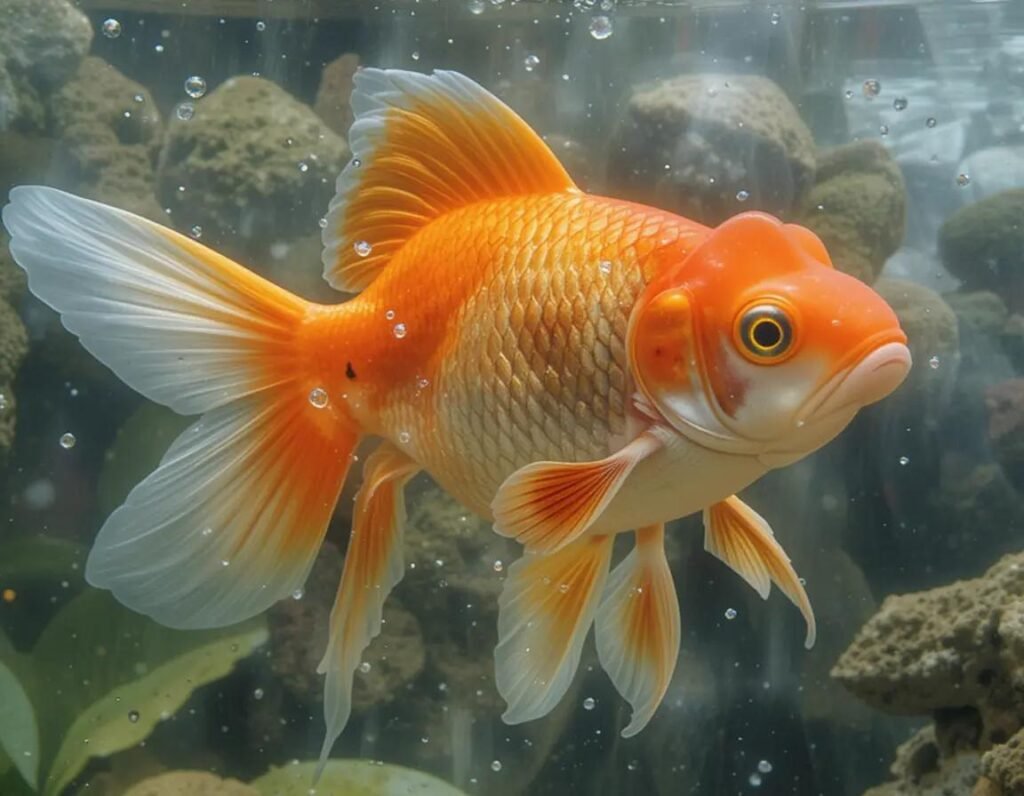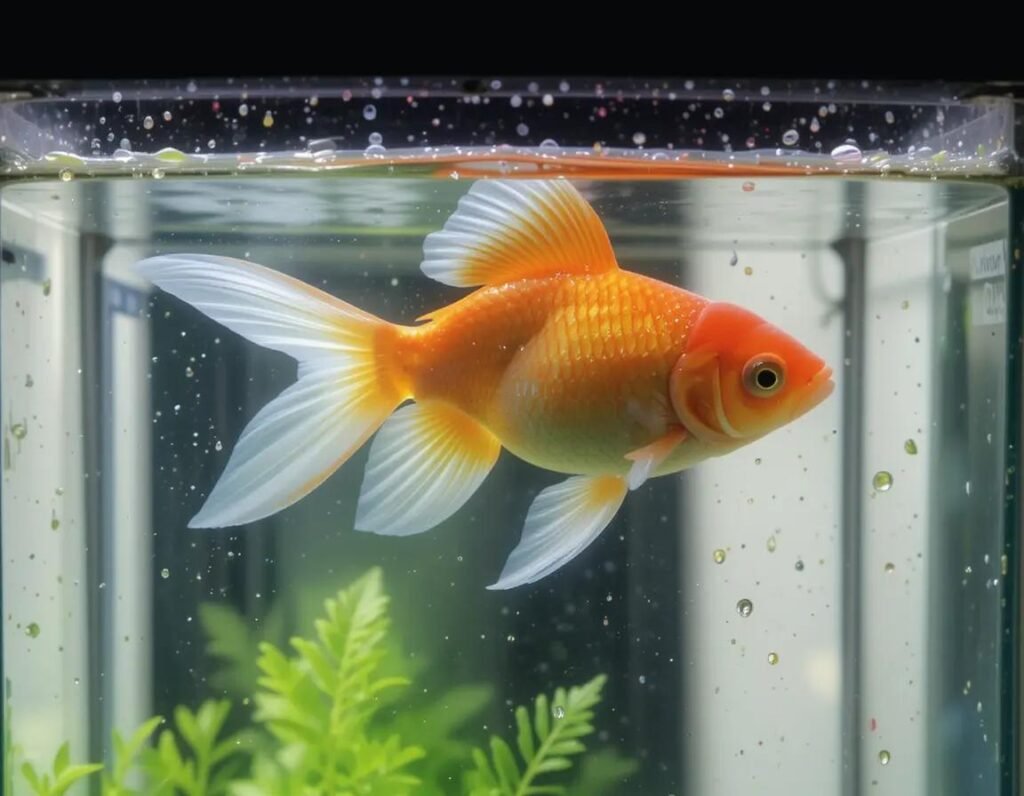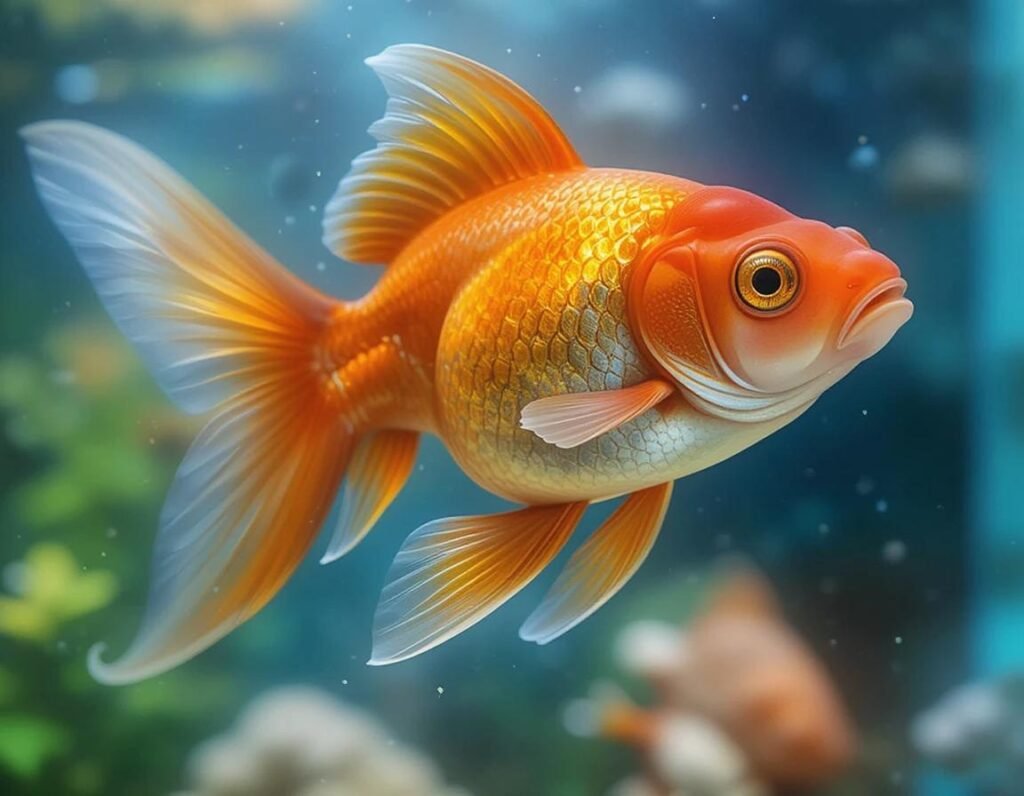
If you’ve ever wondered about the “perfect pH” for your goldfish, you’re not alone. It’s a question many goldfish owners ask, but don’t worry – we’re here to make it crystal clear. Goldfish are pretty hardy, but just like you wouldn’t want to live in a toxic environment, your goldfish deserves a tank that’s just right. So let’s dive in (pun intended!) and explore the ideal pH levels for your golden buddies, along with some tips for keeping their aquatic home in tip-top shape.
What is pH and Why Does It Matter for Goldfish?
Before we get into the nitty-gritty of goldfish pH, let’s break it down. pH is a scale that measures how acidic or alkaline something is. On a scale of 0 to 14:
- 7 is neutral (think pure water).
- Below 7 is acidic.
- Above 7 is alkaline.
Goldfish, like most fish, thrive in an environment where the pH is neither too acidic nor too alkaline. They prefer a balanced “Goldilocks zone” that’s not too extreme in either direction. And just like Goldilocks wanted her porridge “just right,” your goldfish want their water to be just right too!
The Ideal pH Range for Goldfish
For goldfish, the ideal pH range falls between 6.5 and 7.5. This slightly alkaline range is perfect for keeping your goldfish happy and healthy. Think of it as their personal comfort zone, where they can swim, eat, and show off their fancy fins without any water-related stress. It’s like finding the right pillow to sleep on—too soft or too hard, and they’ll be uncomfortable.
If the pH falls below 6.5 (more acidic) or above 7.5 (too alkaline), it can lead to problems. These might include stress, poor immunity, or even issues with their gills and skin. Nobody wants a stressed-out goldfish, right? It’s like having a bad hair day—except the goldfish can’t even do anything about it!
How to Check and Maintain the Right pH for Your Goldfish
Now that you know the ideal pH for your goldfish, let’s talk about how to keep it in check.
1. Test the Water Regularly
Invest in a good pH test kit (or a test strip), and check your water’s pH at least once a week. It’s like getting a regular health check-up for your goldfish—except it’s your tank that gets the check-up!
2. Adjusting pH Levels
If the pH is too low (acidic), you can raise it by adding baking soda (a little at a time) or a commercial pH buffer. If it’s too high (alkaline), you can lower it by using peat moss or commercial pH reducers. Just remember, changes should be gradual—goldfish don’t like sudden shocks, kind of like how you wouldn’t want to wake up and find your living room redecorated overnight!
3. Water Changes and Filtration
Regular water changes help maintain a stable pH and remove any harmful substances. A good filter also ensures the water is clear and free from waste that could cause pH fluctuations. Think of it as keeping your house tidy—your goldfish will appreciate it!
4. Monitor Tankmates and Decorations
Sometimes, the pH of your tank can be affected by certain decorations or even the substrate. For example, rocks with high calcium content can raise the pH. Keep an eye on any changes in water chemistry when you add new items to the tank.
Why pH is So Important for Goldfish Health
When the pH is out of balance, your goldfish might start to show signs of stress. Here are a few things to look out for:
- Faded colors: A stressed goldfish can lose its vibrancy.
- Increased gill movement: Goldfish may breathe more rapidly if the water quality is poor.
- Lethargy or loss of appetite: Goldfish not feeling well might just sit at the bottom of the tank, too tired to swim around.
All of these can be avoided by keeping their water in the right pH range. After all, you want your goldfish to be swimming around looking like little underwater models, right?
Summary: Keeping Your Goldfish’s pH Just Right
Goldfish aren’t picky eaters, but they are picky about their water conditions! Aim to keep their water’s pH between 6.5 and 7.5, and make sure to test regularly. If the pH drifts out of that range, take steps to adjust it slowly, so your goldfish don’t get stressed out. Regular water changes, good filtration, and watching the pH of your tank will keep your goldfish happy and healthy.
Your goldfish will thank you with vibrant colors, graceful swimming, and maybe even a little splash of personality. So, set the pH, sit back, and watch your goldfish thrive in their “just right” environment!
Additional Tips for Maintaining Stable pH in Goldfish Tanks
Keeping your goldfish happy isn’t just about the perfect pH. There are other factors to consider to ensure the water stays in its ideal range.
1. Keep Tank Temperature Steady
Goldfish are quite the temperature-sensitive creatures. If the temperature fluctuates too much, it can cause changes in the pH level. Goldfish do best in water between 65°F and 75°F (18°C – 24°C). So, keep the tank at a stable, comfortable temperature, and make sure it’s not too warm or cold for long periods. It’s like finding the right blanket for your bed—too hot, and you’re sweating; too cold, and you’re shivering!
2. Don’t Overcrowd the Tank
The more fish you have in the tank, the more waste they produce, which can affect the water quality and pH. Overcrowding isn’t just uncomfortable for your fish; it also messes with your tank’s balance. Give each goldfish a little space to swim freely—after all, even goldfish need their personal space.
3. Watch Out for Tank Additives
Many products used in tanks—like water conditioners or medications—can alter the pH. Make sure to research or test any additives before adding them to the tank. You don’t want to accidentally turn your goldfish’s “luxury spa” into a wild experiment! Always follow instructions carefully.
4. Use Live Plants
Live plants aren’t just for decoration—they can also help maintain the balance of pH in the tank. Plants absorb carbon dioxide and release oxygen, which can help stabilize water chemistry. Plus, they give your goldfish something to nibble on when they’re feeling snacky—because why not make it a whole ecosystem experience?

The Bottom Line: A Happy Goldfish Needs a Happy Tank
Goldfish thrive in a slightly alkaline environment with a pH range of 6.5-7.5. Keep the water quality high, test regularly, and adjust the pH slowly if it’s out of whack. A little maintenance goes a long way in keeping your goldfish happy, healthy, and living their best life. So, get your water parameters right, and enjoy watching your goldfish swim circles around you—literally and figuratively!
With the right care, your goldfish will be as happy as a fish in water (literally, but with less of the “too much algae” situation). So go ahead, make their tank their personal oasis—and let them show off their dazzling colors and perfect fins!
FAQs About Ideal pH for Goldfish
Here are some of the most common questions about the ideal pH for goldfish, answered simply and with a splash of fun!
1. What is the ideal pH for goldfish?
Answer: The ideal pH for goldfish is between 6.5 and 7.5. This slightly alkaline range helps your goldfish thrive and stay healthy. Think of it as the sweet spot that keeps them comfortable—like finding the perfect cozy chair to relax in!
2. Why is pH important for goldfish?
Answer:pH plays a big role in your goldfish’s health. If the pH is too high or too low, it can cause stress, respiratory problems, or even weaken their immune system. It’s like goldfish need a perfect atmosphere to live in—too hot or too cold, and they won’t be able to enjoy their fishy life as much.
3. How can I test the pH of my goldfish tank?
Answer:You can easily test the pH of your goldfish tank with a pH test kit or test strips, available at most pet stores. Just dip the strip into the tank water, wait a few seconds, and match the color to the chart provided. It’s like checking the temperature of your bath water—too hot or too cold? Test it first!
4. What happens if the pH is too low or too high for my goldfish?
Answer:If the pH is too low (acidic), your goldfish could become stressed, show faded colors, or have trouble swimming. If the pH is too high (alkaline), it can cause issues like skin irritation or difficulty breathing. The water’s pH affects their overall health, so it’s important to keep it in the right range!
5. How do I adjust the pH in my goldfish tank?
Answer:To raise the pH, you can use baking soda (a small pinch at a time) or a commercial pH buffer. To lower the pH, you can use peat moss or a pH reducer. Just make sure to make any changes slowly—goldfish don’t like sudden shifts! It’s like slowly changing the thermostat instead of cranking it up all at once.
6. Can I use tap water for my goldfish tank?
Answer:Yes, but tap water can vary in pH, so it’s important to test it before adding it to your tank. If your tap water has a pH that’s outside the ideal range for goldfish, you may need to adjust it using the methods mentioned above. Always treat tap water with a dechlorinator before adding it to the tank to ensure it’s safe for your goldfish.
7. How often should I check the pH of my goldfish tank?
Answer:It’s a good idea to check the pH at least once a week, especially after water changes. If you’re maintaining a stable pH, you can test it less often, but it’s better to be safe than sorry—no one likes a sudden, uninvited pH party in their tank!
8. Can goldfish survive in acidic water?
Answer:Goldfish can survive in slightly acidic water, but it’s not ideal for them. pH levels below 6.5 can lead to stress and health problems. If your water is too acidic, it’s time to adjust the pH and bring it back to a comfortable, slightly alkaline range.
9. How can I keep my goldfish tank’s pH stable?
Answer:To maintain a stable pH, you should:
- Perform regular water changes (about 25% weekly).
- Use a good filtration system to keep the water clean.
- Add live plants to help balance the water chemistry.
- Avoid overcrowding the tank to reduce waste buildup. Consistency is key—your goldfish will appreciate a stable, clean environment!
10. What should I do if my goldfish is showing signs of stress related to pH?
Answer:If your goldfish is stressed from a pH imbalance, you’ll likely notice signs like rapid breathing, faded colors, or lethargy. In this case, check the pH immediately and make the necessary adjustments slowly. Also, test for ammonia and nitrite levels, as high levels of these can also cause stress. Once the pH is corrected and the water quality improves, your goldfish should perk up!
Summary
Keeping the pH in the right range (6.5-7.5) is essential for your goldfish’s health and happiness. Regularly test the water, make gradual adjustments when needed, and keep an eye on your fish’s behavior. A balanced pH means a happy, healthy goldfish—and who doesn’t love a happy fish?
With these tips, your goldfish will be swimming around in a pH-perfect paradise in no time!


